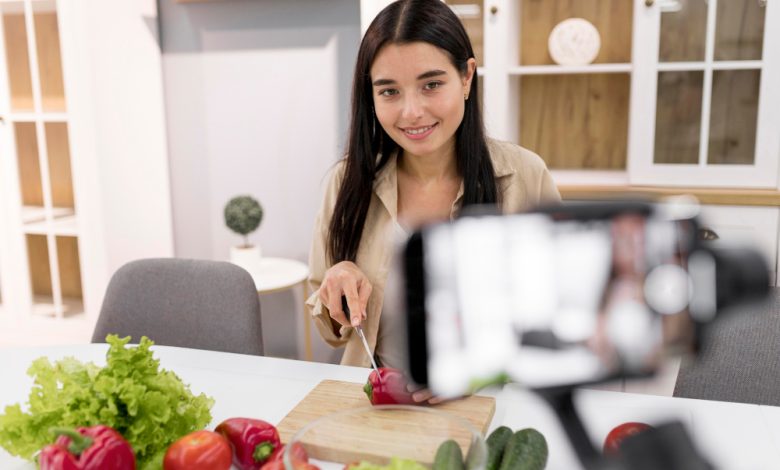Creating Passive Income Streams as a Food Blogger

In the ever-evolving world of digital media, food blogging has emerged as a popular and profitable niche. While sharing recipes, culinary experiences, and food photography can be fulfilling, turning your food blog into a source of passive income can elevate your hobby into a sustainable business. Passive income allows you to earn money with minimal ongoing effort, giving you the freedom to focus on creating content you love. Here’s a comprehensive guide on how to create passive income streams as a food blogger.
1. Affiliate Marketing
Affiliate marketing is one of the most accessible ways to generate passive income. By promoting products or services relevant to your audience, you earn a commission for every sale made through your unique affiliate link.
How to Get Started with Affiliate Marketing:
- Join Affiliate Programs: Sign up for programs like Amazon Associates, ShareASale, or CJ Affiliate, which offer a wide range of products suitable for food bloggers.
- Promote Relevant Products: Recommend kitchen gadgets, cookbooks, or specialty ingredients that you genuinely use and love.
- Incorporate Links Naturally: Embed affiliate links within your blog posts, recipe pages, or product review articles in a way that feels organic and helpful to your readers.
- Disclose Affiliate Relationships: Be transparent with your audience about your affiliate partnerships to build trust and comply with legal guidelines.
Tips for Success:
- Focus on products that align with your niche and audience interests.
- Write in-depth reviews or comparison posts to provide value and encourage purchases.
- Monitor your affiliate links’ performance and adjust your strategy based on what resonates with your audience.
2. Display Advertising
Displaying ads on your blog is a straightforward method to earn passive income. Ad networks place relevant advertisements on your site, and you earn money based on impressions or clicks.
How to Implement Display Advertising:
- Choose an Ad Network: Start with Google AdSense for beginners or apply to premium networks like Mediavine or AdThrive once your traffic meets their requirements.
- Optimize Ad Placement: Place ads in strategic locations on your blog where they are visible but do not disrupt the user experience.
- Increase Blog Traffic: More visitors to your site mean more ad impressions and higher income potential.
Tips for Success:
- Balance ad placement to maintain a clean and user-friendly blog design.
- Focus on SEO and content marketing strategies to drive organic traffic.
- Regularly review your ad performance and experiment with different formats and placements.
3. Sell Digital Products
Creating and selling digital products is an excellent way to leverage your expertise and provide value to your audience.
Types of Digital Products for Food Bloggers:
- E-books: Compile your best recipes, meal plans, or cooking tips into an e-book.
- Online Courses: Offer courses on cooking techniques, food photography, or starting a food blog.
- Printable Meal Plans and Grocery Lists: Provide downloadable resources to help readers organize their cooking and shopping.
How to Sell Digital Products:
- Create High-Quality Content: Ensure your digital products are professionally designed and packed with valuable information.
- Set Up an Online Store: Use platforms like Shopify, Gumroad, or WooCommerce to sell your products directly from your blog.
- Promote Your Products: Use blog posts, email marketing, and social media to market your digital offerings.
Tips for Success:
- Identify your audience’s needs and create products that solve their problems.
- Offer a free sample or preview to entice potential buyers.
- Collect feedback to improve your products over time.
4. Develop a Membership Site
Membership sites offer exclusive content to subscribers for a recurring fee, providing a steady passive income stream.
Steps to Create a Membership Site:
- Define Exclusive Content: Offer members-only recipes, cooking tutorials, webinars, or a private community.
- Choose a Platform: Use membership plugins like MemberPress or Paid Memberships Pro if you’re on WordPress.
- Set Membership Levels: Offer different tiers with varying levels of access and benefits.
Tips for Success:
- Ensure your exclusive content is valuable and not available elsewhere on your blog.
- Engage with your members regularly to build a strong community.
- Offer special promotions or discounts to attract new members.
5. Create a YouTube Channel
Starting a YouTube channel complements your blog and opens up additional revenue streams through ad revenue and sponsorships.
How to Monetize Your YouTube Channel:
- Enable Monetization: Once you meet YouTube’s Partner Program requirements, you can earn from ads displayed on your videos.
- Create Engaging Content: Produce high-quality cooking demonstrations, recipe videos, or food reviews.
- Use Affiliate Links: Include affiliate links in your video descriptions.
Tips for Success:
- Optimize your videos for SEO with relevant keywords and engaging thumbnails.
- Encourage viewers to subscribe and engage with your content.
- Collaborate with other YouTubers to expand your reach.
6. Offer Sponsored Content
Working with brands to create sponsored content can be lucrative. Brands pay you to feature their products in your blog posts or social media.
How to Secure Sponsored Opportunities:
- Build a Strong Portfolio: Maintain a professional blog with high-quality content and photography.
- Grow Your Audience: Brands are more likely to work with bloggers who have a significant and engaged following.
- Reach Out to Brands: Pitch collaboration ideas to brands that align with your niche and audience.
Tips for Success:
- Be selective and work with brands that fit your blog’s theme to maintain authenticity.
- Disclose sponsored content to comply with legal requirements and maintain trust with your audience.
- Deliver high-quality content that meets the brand’s expectations.
7. License Your Food Photography
If you have a knack for food photography, you can license your images to stock photo sites or sell them directly to businesses.
How to License Your Photos:
- Join Stock Photo Sites: Submit your images to sites like Shutterstock, iStock, or Adobe Stock.
- Set Up a Portfolio: Create a professional portfolio showcasing your best work.
- Market Your Photos: Reach out to food magazines, cookbook publishers, or restaurants that may need high-quality images.
Tips for Success:
- Ensure your photos meet the technical requirements of stock sites.
- Use keywords and descriptions effectively so your images are discoverable.
- Keep up with photography trends to produce in-demand images.
8. Publish a Cookbook
Publishing a cookbook establishes you as an authority and provides a source of royalties.
Options for Publishing:
- Traditional Publishing: Secure a book deal through a publisher, which may require an agent and a strong proposal.
- Self-Publishing: Use platforms like Amazon’s Kindle Direct Publishing to publish your cookbook independently.
Tips for Success:
- Focus on a unique angle or niche to stand out in the market.
- Invest in professional editing and design to ensure a high-quality product.
- Promote your cookbook through your blog, email list, and social media.
9. Set Up an Online Shop for Physical Products
Selling branded merchandise or kitchen accessories can diversify your income.
Steps to Set Up an Online Shop:
- Choose Products: Consider items like branded aprons, mugs, or custom kitchen utensils.
- Source Products: Use print-on-demand services like Printful or source products from suppliers.
- Integrate E-commerce: Add an online store to your blog using Shopify or WooCommerce.
Tips for Success:
- Offer products that align with your brand and appeal to your audience.
- Provide excellent customer service to encourage repeat business.
- Promote your products through your content and social media.
10. Create a Podcast
Podcasts are growing in popularity and can be monetized through sponsorships and affiliate marketing.
How to Start a Food Podcast:
- Choose a Format: Decide whether your podcast will feature interviews, solo episodes, or panel discussions.
- Set Up Recording Equipment: Invest in a good microphone and recording software.
- Publish and Promote: Use platforms like Anchor or Libsyn to distribute your podcast.
Tips for Success:
- Cover topics that interest your audience, such as culinary tips, food culture, or interviews with chefs.
- Be consistent with your publishing schedule to build a loyal listener base.
- Use your blog and social media to promote new episodes.
Conclusion
Creating passive income streams as a food blogger requires strategic planning, consistent effort, and a deep understanding of your audience. By diversifying your income sources through affiliate marketing, advertising, digital products, and more, you can build a sustainable business that generates revenue even when you’re not actively working. Focus on providing value to your audience, maintain authenticity, and continually adapt to the evolving digital landscape. With dedication and creativity, your food blog can become not just a platform for sharing your passion but a thriving source of passive income.





